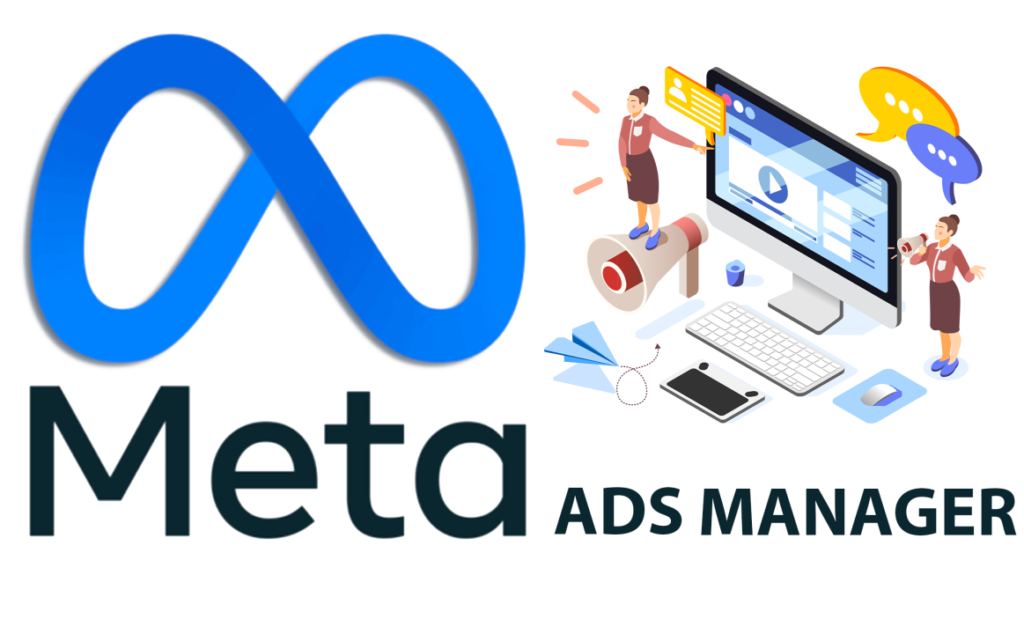
1. Campaign
The top level of your ad structure. This is where you define the objective of your advertising effort—what you’re trying to achieve. One of the main three key components of Meta Ads
Key Elements:
Key Elements:
- Objective Selection:
Choosing an objective aligns your campaign with your business goals and helps Meta (formerly Facebook) optimize ad delivery accordingly. Common objectives include:- Awareness:
- Brand Awareness
- Reach
- Consideration:
- Traffic
- Engagement
- App Installs
- Video Views
- Lead Generation
- Messages
- Conversion
- Conversions
- Catalog Sales
- Store Traffic
- Awareness:
Purpose:
Setting the campaign objective ensures that your ads are optimized for the specific action you want your audience to take. For instance, if your goal is to drive website traffic, selecting the “Traffic” objective will prompt Meta to show your ads to users most likely to click on the link.
2. Ad Set
Definition:
An Ad Set resides within a campaign and allows you to define the targeting, budget, schedule, bidding strategy, and placements for a group of ads. Each campaign can contain multiple ad sets, enabling you to target different audiences or test various strategies under the same campaign objective.Mayple. Adset is one among the three key components of Meta Ads.
Key Elements:
- Audience Targeting:
Specify who will see your ads by defining parameters such as:- Demographics: Age, gender, education, job title, etc.
- Location: Country, region, city, or a specific radius around a location.
- Interests and Behaviors: Pages liked, activities, purchase behaviors, device usage, etc.
- Custom Audiences: Retargeting previous website visitors, app users, or customer lists.
- Lookalike Audiences: Finding new users similar to your existing customers.
- Placements:
Choose where your ads will appear. Options include:- Facebook News Feed
- Instagram Feed
- Facebook Marketplace
- Instagram Stories
- Audience Network
- Messenger
- Budget and Schedule:
Set your ad spend and duration:- Daily Budget: The average amount you’re willing to spend per day.
- Lifetime Budget: The total amount you’re willing to spend over the entire campaign duration.
- Schedule: Define start and end dates, and specify if ads should run continuously or only during specific hours/days.
- Optimization & Delivery:
Determine how you want Meta to optimize ad delivery based on your objective:- Optimization Goal: For example, optimizing for link clicks, impressions, or conversions.
- Bid Strategy: Choose between options like lowest cost (automatic bidding) or setting a bid cap (manual bidding).
Purpose:
Ad Sets allow for granular control over who sees your ads, where they see them, and how much you’re willing to spend to reach them. This structure facilitates testing different audiences, placements, and budget strategies to identify the most effective combinations.Your strategy settings—who, where, when, and how much. That’s why Ad set consider one among the three key components of meta ads
3. Ad (Ad Copy/Creative)
Definition:
Ad( Ad Copy /Creative) is the last component of meta ads. The Ad is the final component where you create the actual content that your target audience will see. This includes the visual elements, text, and call-to-action that convey your message and encourage users to take the desired action.
Key Elements:
Key Elements:
- Ad Format:
Choose the layout for your ad:- Single Image or Video: A standalone visual or video.
- Carousel: Multiple images or videos in a single ad, each with its own link.
- Collection: A group of items that open into a full-screen mobile experience.
- Media:
Upload high-quality images or videos that align with your message and resonate with your target audience. - Primary Text (Ad Copy):
The main text that appears above or below your media. It should be concise, engaging, and clearly convey your value proposition.
- Headline:
A brief, attention-grabbing title that highlights the main point or offer. - Description:
Additional information that provides more context or details about your offer. - Call-to-Action (CTA) Button:
A prompt that encourages users to take a specific action, such as:- Learn More
- Shop Now
- Sign Up
- Download
- Contact Us
- Destination URL:
The webpage users will land on after clicking the ad. Ensure it
Conclusion
Here listed the three key components of meta ads. Running effective Facebook and Instagram ads campaigns requires more than just hitting the “Boost” button. Success lies in understanding and mastering the three foundational components: targeting the right audience, crafting visually appealing and engaging creatives, and continuously optimizing performance based on data.
Audience targeting ensures that your message reaches the people most likely to engage or convert—through demographics, interests, behaviors, and lookalike audiences. Without proper targeting, even the best ads will fall flat.
Next, compelling creatives—whether static images, videos, or carousel formats—are what capture attention and drive engagement. Strong visuals paired with persuasive copy tailored to your audience can make the difference between being scrolled past or clicked on.
Finally, no campaign is perfect from the start. Optimization—through A/B testing, monitoring metrics like CTR, CPC, ROAS, and tweaking underperforming elements—is what turns a decent campaign into a high-performing one.
By focusing on these three pillars, marketers can build campaigns that not only look good but perform exceptionally well, delivering measurable ROI and helping brands grow in a crowded digital marketplace. Campaigns, Ad set and Ad Copy serves as the three key components of Meta Ads
For More Blogs Visit our Blog Page